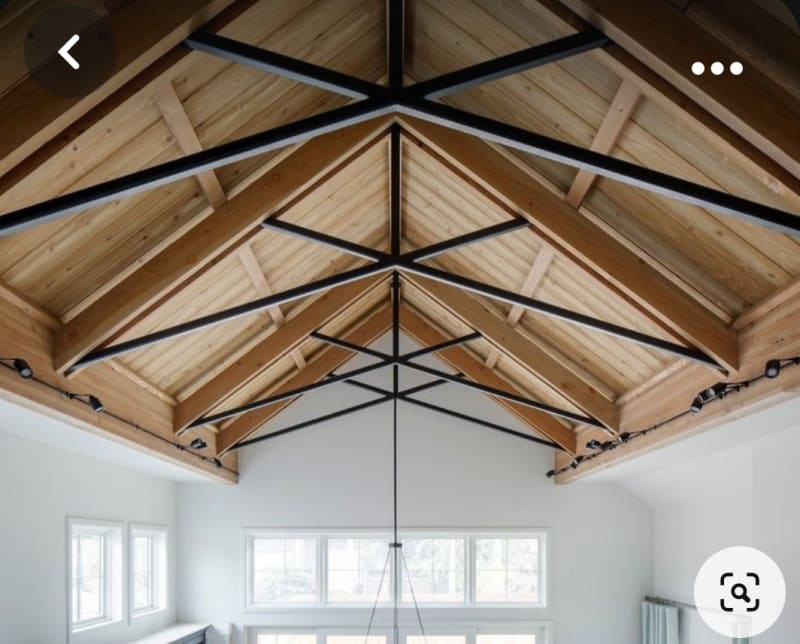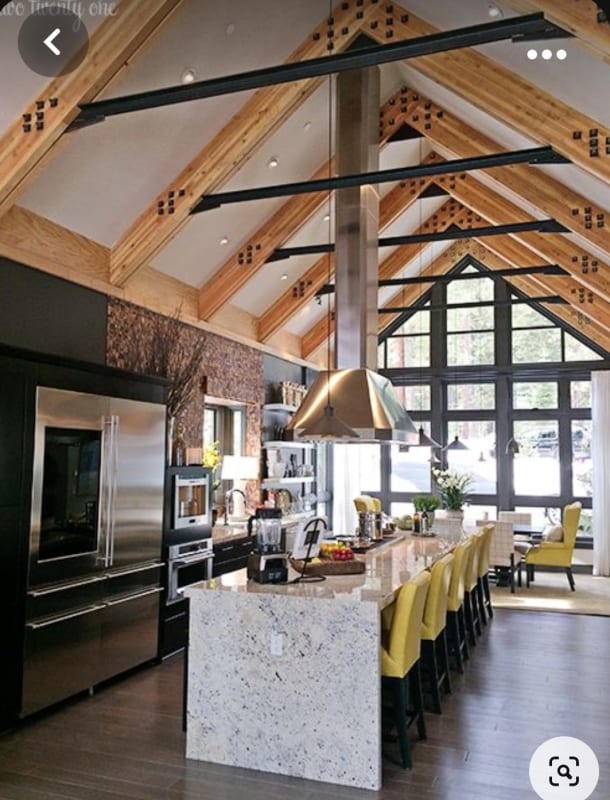

Hey guys. I wanted to share this to get your thoughts. The build concept and thought process is this;
The inner exposed yellow pine beams will tie the 2x6 walls together...The concept spawned from the simular beam concept in above picture...the scissor trusses design is posted to ask if perhaps would be easier to engineer...but other is preffered
Construction would be in order - Frame walls, install tension rods, install roof rafters (typ engineered wood I beams @ 16" centers) insulate, sheetrock..... THEN install the exposed beams, bold into place.... remove temp tension rods.
Looking at the drawing you can see the welded steel tube brackets at peak ridge, and there are 2 acting as tie beams. The bottom of beam will bolt to a double or triple top plate to tie walls together.
This is for construction in Florida so no snow load.

FOR BETTER VIEW SEE UPLOADED PDF
